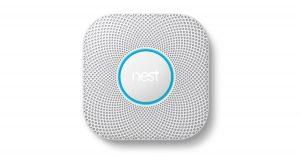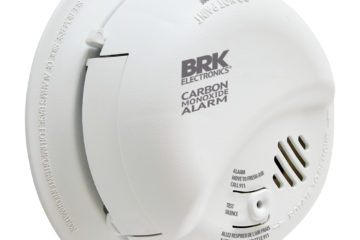 Carbon monoxide is responsible for thousands of deaths and tens of thousands of hospital visits every year in North America. This single statement should be enough to make you realize that you need to have a carbon monoxide detector in your home or business today.
Carbon monoxide is responsible for thousands of deaths and tens of thousands of hospital visits every year in North America. This single statement should be enough to make you realize that you need to have a carbon monoxide detector in your home or business today.
Any item that burns fossil fuels can cause carbon monoxide this includes household appliances and vehicles, this means that carbon monoxide can occur in everyday, commonplace occurrences. Think about all the situations where carbon monoxide could be present throw your day, whether at home or at work, you are in danger of carbon monoxide poisoning much more often than you think.
What happens when carbon monoxide enters your body?
Upon entering your body, carbon monoxide replaces oxygen molecules found in your bloodstream and robs your body of the oxygen you so vitally need. Most people don’t even think about carbon monoxide poisoning when it is happening to them, this is because it has many flu-like symptoms such as nausea, upset stomach, headaches, and drowsiness.
What are the most common situations of carbon monoxide production?
Well like I mentioned earlier any fuel-burning Appliance can be a source of carbon monoxide, here is a list of common household carbon monoxide producing appliances.
- Your Furnace System or Boiler
- If You Have a Gas Dryer
- Your Hot Water Heater
- Your Gas or Wood Burning Fireplace
- Gas Range Stoves
- Generators or gas-powered lawn equipment
- Wood Stoves
- Automotive and recreational vehicles
All of the items above our potential carbon monoxide producers and should be checked for safe operation at least once per year As part of your homeowner maintenance requirements. Obviously, when it comes to having a vehicle in an attached garage you should never run the vehicle for any length of time in there, simply start the vehicle and back it outside.
What level of CO Concentration should your home be at?
in an ideal situation, your home should have the same carbon monoxide levels as the outdoors. typically it will be somewhere between .03 and 2.5% per million on average over an 8 hour period. If you have a higher level of carbon dioxide concentration indoors then there is outdoors this indicates the potential carbon monoxide problem.
What can you do to protect yourself from CO poisoning?
Luckily protecting yourself today from potential carbon monoxide poisoning is relatively easy and affordable. Advancements in detectors have come a long way and are very reliable, There are many Brands available and some are combined with smoke detectors. I personally have the NEST carbon monoxide/smoke detector. This particular detector is what is called a smart detector and can be operated using my cell phone. the detector is connected to my Google assist through WiFi and I have an app on my phone through nest that allows me to test, turn off the detector in the case of a false alarm, such as burning something in the oven and creating smoke.
Although there are many brands of detectors that offer both smoke and carbon monoxide they are not the same and need to be mounted differently than a smoke detector. carbon monoxide does not rise as high as smoke will and thus it must be mounted on the wall about five feet from the floor as opposed to on the ceiling. you should have a carbon monoxide detector in every room that has a potential danger, you also want to have a detector close to where you sleep as you are extremely hard to wake up when under the influence of carbon monoxide. If I had to choose to place a carbon monoxide detector in my furnace room and my bedroom I would always choose my bedroom because I am there much more often and rarely visit my furnace room, ideally I would want to have one in both rooms.
Maintaining and testing your carbon monoxide detector
Just like you should test your smoke detector every year you should also check your carbon monoxide detector. All detectors will have a test button that you can press to make sure that they are working correctly. and just like a smoke detector you want to check the batteries every year. Mark this important task on your calendar of house tasks so that you do not forget. A lot of the new carbon monoxide detectors such as the nest smart detector will let you know automatically if the batteries are running low.
What to do if your detector goes off
Carbon monoxide is a colorless and odorless gas, tracking its source is very hard to do and requires specialized equipment. If your detector alerts you of a problem you need to exit that area immediately, do not delay even a minute. depending on the concentration of the gas it can kill you in minutes, immediately go to the hospital and get checked out. Once you have been cleared by the hospital call your local gas company to inspect your home and find the source of the carbon monoxide leak and have it repaired.
Conclusion
We cannot stress enough how important it is to have a carbon monoxide detector in your home, this simple device saves thousands of lives every year by working 24 hours a day 365 days a year detecting unusual levels of this very dangerous gas.

